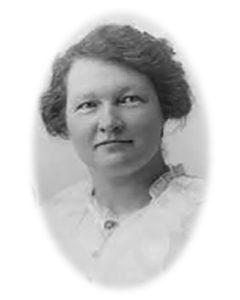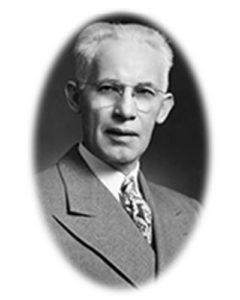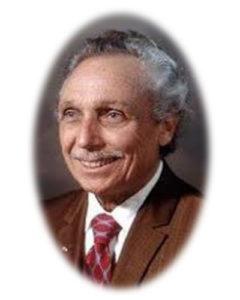Recognizes “The Legends of Chiropractic”
HENCE THE BIRTH OF THE CHIROPRACTIC PROFESSION!

DD Palmer, DC
(September 18, 1895 - First Chiropractic Adjustment)
Daniel David Palmer or D.D. Palmer was a Canadian American chiropractor who was the founder and discoverer of chiropractic. Palmer was born in Port Perry, Ontario, but emigrated to the United States. He was an avid proponent of various forms of alternative medicine such as magnetic healing

Minora Paxon, DC
(DC 1900)
Minora Paxon was among one of the first women to pave roads in chiropractic. She co-authored the first chiropractic textbook, Modernized Chiropractic, and was also the first woman to obtain a license under the Illinois Medical Practice Act. [1]

BJ Palmer, DC
(DC 1902)
B.J. Palmer is the developer and perpetuator of chiropractic. He launched his colorful career by assuming the responsibility of the Palmer School of Chiropractic in 1906. His contributions included extensive research, improved methods of spinal adjusting and analysis, higher standards for chiropractic education, and increased appreciation for chiropractic worldwide. B.J. battled on many fronts — legal and legislative obstacles to the licensing of chiropractors and financial challenges to the school. He was often the center of controversy, but well before his death in 1961, chiropractic had secured a place among the health sciences. [2]

Mabel Palmer, DC
(DC 1905)
Not only was Mabel Palmer a professor of anatomy for over 20 years, but she also authored the textbook Chiropractic Anatomy which expounded on the cornerstone idea of innate intelligence. She became the president of the first ever women’s chiropractic organization—Sigma Phi Chi—and was married to Doctor B.J. Palmer for almost 45 years. [1]

Almeda Jane Haldeman, DC
(DC 1905)
When Almeda Haldeman’s husband was diagnosed with diabetes around 1904, there was no medical intervention available. Determined to do everything in her power to help him, she went to the Minneapolis School and Cure, and educated herself in the new healing art of chiropractic, receiving her degree in 1905. Then, following the advice to move her husband to a cold, dry climate, they relocated to Saskatchewan, Canada and Almeda Haldeman, D.C. became the first chiropractor in Canada, and one of the first female chiropractors in the world. [3]

Hugh B Logan, DC
(DC 1915)
Founded a chiropractic technique (Logan Basic Technique) based on the theory that continuous pressure on a pelvic ligament with deep sensory reflex adjusts a spinal segment. Was also the founder and first president of the Logan Chiropractic College.

Leo Spears, DC
(DC 1921)
One of the more popular methods of full-spine treatment used by chiropractors comes from a book by the late Dr. Leo Spears (chiropractor) — The Spears Painless System. It advocates “full-spine adjusting.”
Developed and fought for by Spears, one of the most famous of all the chiropractic hospitals, was the 600-bed Spears Hospital in Denver, Colorado – the world’s largest private non-medical hospital.

Richard Van Rumpt, DC
(DC 1922)
Directional Non-Force Technique, or D.N.F.T. as it is abbreviated, is the original non force technique of chiropractic developed by Dr. Richard Van Rumpt. At the heart of the technique is a method of challenging and leg measuring to detect the presence and location of subluxation, and a thumb thrust for correction. Structures included in analysis and correction are vertebrae, ribs, muscles, discs, cranials, soft tissues, extremities, and some ligaments. [4]

Clarence Gonstead, DC
(DC 1923)
Father of the Gonstead technique, he used engineering principles to differentiate between primary subluxations and compensations. The goal was to prevent over-adjusting by only treating primary subluxations. [5]

Major Bertrand DeJarnette, DO, DC
(DC 1924)
Major Bertrand DeJarnette, DO, DC was a Chiropractor and Osteopath, and is notable for having discovered and developed S.O.T. or Sacro Occipital Technique.

Herbert Ross Reaver, DC
(DC 1928)
Herbert Ross Reaver, the "most jailed chiropractor," who went to jail for 'practicing medicine without a license' in the years leading up to chiropractic's designation as a separate and distinct profession. Reaver stood for a principle. He sacrificed his safety and security to preserve the right to practice chiropractic.

Lyle Wheeler Sherman, DC
(DC 1934)
Dr. Lyle Wheeler Sherman is a name that has gone down in history for being B.J. Palmer’s “Right-Hand Man.” Dr. Sherman was the second in command (behind B.J.) in the B.J. Palmer Chiropractic Clinic (BJPCC) from 1942 until he left in 1955. Notable accomplishments Dr. Sherman aided in include development of the neurotempometer, the neurogalograph, the cervical x-ray chair, and playing a major role in the development of pattern analysis of vertebral subluxations which is still being effectively used today with thermography. Dr. Sherman granted Dr. Thomas A. Gelardi’s, D.C. request of naming the Chiropractic College he founded, Sherman College of Straight Chiropractic. [8]

George Goodheart, DC
(DC 1939)
In 1964 Dr. Goodheart made the first correlation between finding a weak muscle using manual muscle testing and then employing chiropractic therapy to make it stronger. He looked beyond the chiropractic profession to the fields of biomedicine, osteopathy, acupuncture, dentistry, nutrition, biochemistry, and others for methods to increase the health and well being of patients based on using the body itself as a diagnostic tool. Dr. Goodheart wrote many works on Applied Kinesiology, and lectured on the topic often. Among his many professional honors, he was the first chiropractor to serve on the U. S. Olympic Medical Team in 1980.

Lorraine Welch, DC
(DC 1942)
Dr. Welch was a 1942 graduate of the Columbia Institute of Chiropractic (now NYCC). Earlier while enrolled at Columbia University, she met her future husband, Dr. Frank E. Dean, founder of the Columbia Institute of Chiropractic (CIC) through very active roles as registrar, head of the library, teaching classes in histology, embryology, and anatomy, and representing the school to professional associations. She received her Ph.D from NYU in 1956. Her thesis was entitled, “Chiropractic: An evolving art, science, and philosophy.” Dr. Welch remained dedicated to the college until her passing in 1974.

Ernest G Napolitano, DC
(DC 1943)
In 1954 he earned his degree in law from Blackstone School of Law. At a time when the chiropractic profession was struggling for credibility, practice was still unlicensed in New York and the move was on to either upgrade our educational institutions or close them, Dr. Napolitano became the President of Columbia Institute of Chiropractic. He led the institute to merge with the Atlantic States College of Chiropractic forming the school we know today as New York Chiropractic College. Dr. Napolitano tirelessly contributed to the advancement of the College and the profession as a whole from 1959 until his death in 1985, receiving 13 honorary degrees and over 50 educational, professional and civic awards during his extensive career.

Jim Parker, DC
(DC 1946)
Jim Parker, became interested in chiropractic medicine when he was 12 years old. While with the help of chiropractic care, he recovered from severe back and neck injuries. Following in the footsteps of his mentor, Roy LeMond, Parker graduated from Palmer School of Chiropractic in July 1946. Becoming known for his Parker Seminar program, inaugurated in 1951, Parker looked to extend his influence in the chiropractic field with the founding of Parker College of Chiropractic in 1978. [6]

Clay Thompson, DC, PhC
(DC 1947)
J. Clay Thompson, the man behind the Thompson Technique, realized early in practice that traditional adjusting methods and tables caused fatigue for chiropractors and, at times, discomfort for patients. His understanding of biomechanics and Newtonian physics helped him to develop a system of analyzing full-spine subluxations and adjusting them with a low-force method. Thompson developed a side posture table with the headpiece mounted on an auto jack from a Ford Model T while he was studying at PSC. He was granted a process patent for the drop headpiece in 1954.

Richard Stober DC, ND
(DC 1950)
Founder and developer of Bi-lateral Nasal Specific (BNS) Cranial Technique. Dr. J. Richard Stober was a graduate of Western States Chiropractic College (University of Western States) who specialized in BNS from the early 1940’s until his death in 1987. BNS was first used to treat infants and children suffering from birth trauma, learning disorders, hearing loss, autism, ADHD, and especially cerebral palsy. Dr. Stober’s lifelong commitment to endonasal cranial adjusting gave rise to a variety of modern day techniques including Cranial Facial Release, Nasal Specific, and Functional Cranial Release - all of which are quickly establishing themselves as a standard protocol in chiropractic cranial adjusting.

Virgil Strang, DC, FICA
(DC 1951)
He joined the anatomy faculty at the Palmer College of Chiropractic and opened a private practice in Davenport in 1951. He continued to both teach and practice throughout the subsequent 47 years, while becoming internationally known as a chiropractic philosopher. His philosophy textbook, "Essential Principles of Chiropractic," has been widely used throughout the profession. Dr. Strang had served in a variety of administrative capacities at Palmer, including director of admissions from 1965 to 1967, director of education from 1963 to 1967, director of professional ethics since 1967 and dean of philosophy from 1979 until his appointment as interim president in 1994. He also was a professor of anatomy and philosophy.

Russell Erhardt, DC, DACBR
(DC 1951)
A distinguished chiropractor who achieved world-wide recognition for his contributions towards advanced techniques in chiropractic radiology. He was an international lecturer/educator and received the D.D. Palmer Chiropractic Scientific Award and the Distinguished Service Award from Parker Chiropractic Research Foundation.

Fred Barge, DC, PhC (Hon) FICA, FPAC, SCS
(DC 1954)
Dr. Fred Barge Ph.C. is one of the most well-known and respected chiropractors in the history of the profession. He has written 9 books that are used by doctors and students throughout the world to enhance their understanding of chiropractic. His nine books included Wryneck (1998), Giant vs. Pygmy + Thots (1994), Scoliosis (1981), Torticollis (1979) and Tortipelvis (1976), and his most popular publication, "Are You The Doctor, Doctor?"

Sid Williams, DC, BS
(DC 1956)
Dr. Sidney E. Williams, known primarily as Dr. Sid, was a chiropractor most well known for establishing the largest single-campus chiropractic school, Life University.

Nell Kimbrough Williams, DC, BS
(DC 1956)
Alongside her husband, Nell Williams owned and managed over 20 chiropractic clinics. Life University, to date the largest chiropractic college in the world, was founded by Nell and her husband. She won “Woman Chiropractor of the Year” in 1981 and wrote the first textbook on training and becoming a chiropractic assistant. [1]

Thomas Gelardi, DC
(DC 1957)
While a student at Palmer, Dr. Gelardi decided the mission for his life was to bring a vertebral subluxation service to as many people as possible.
In 1973 Gelardi founded and became the first president of Sherman College of Chiropractic. He led the the school or nearly 3 decades, serving president until 1997. He served as a member of the board of Trustees from 1997- 2002.
In 1996, Gelardi published an article called The Science of Identifying Professions. In the article, Gelardi addresses the divisions within the chiropractic profession and offers a path forward. He lays out his central thesis that a profession is defined by its mission.[7]

Reggie Gold, DC, PhC
(DC 1957)
As a pioneer of objective straight chiropractic, Gold’s life and work helped to shape the chiropractic profession. Reggie’s philosophy is best captured in his lectures. Many of his best talks may be found at: www.reggiegold.com. [7]

Jim Sigafoos, DC
(DC 1959)
He is considered one of the top speakers in the chiropractic profession and leader in the world of natural healing. Dr. Sigafoose has spoken world-wide including Japan and Australia. He was one of 18 Life Sports Team chiropractors to attend the 1986 Goodwill games in Moscow, one of 20 to participate in the Mission in Haiti and one of 25 in Mission Panama. He is the author of Good Medicine as well as a variety of chiropractic educational audio and video tapes.

Frank P DeGiacomo, DC, FACC
(DC 1965)
Chiropractor and Professor of Philosophy at NYCC who influenced many through his teachings and the book he authored "Man's Greatest Gift to Man... Chiropractic"

Bobby Doscher, DC
(DC 1977)
As a result of having to wear leg braces as a child, Bobby Doscher walked into her chiropractic career with a special kind of empathy for the patients she saw. Specializing in aiding children who were “neurologically disorganized”, she founded and developed Oklahaven on the Move—a Children’s Chiropractic Center—to service children around the world. [1]

Don Harrison, DC, PhD
(DC 1979)
Arguably one of Dr. Harrison’s greatest achievements and his greatest legacy for the Chiropractic profession is the fact that he was the primary origin of Chiropractic BioPhysics® (CBP®) Technique (1980), with its Mirror Image® methods.

Dr. Gerard Clum, DC, FICA
(DC 1973)
Lecturer, Educator and Past Presadent of Life Chiropractic College West.
He was a founder, member and officer of the Association of Chiropractic Colleges (ACC), a board member and officer of the Council on Chiropractic Education (CCE) and he has served as a test committee member and consultant to the National Board of Chiropractic Examiners (NBCE). [9]
[1] Referenced from Valeo Chiropractic Website, “Women Who Pioneered Health” LINK
[2] Referenced from Rebel Chiropractic Website, “The History of Chiropractic” LINK
[3] Referenced from Palmer College of Chiropractic Blog, “From Canada to South Africa, Three Generations of Haldemans Push Passed Boundaries to Care for Patients” LINK
[4] Referenced from The American Chiropractor Magazine, July 1989, “The Directional Non-Force Technique of Chiropractic” LINK
[5] Referenced from Life West Chiropractic Magazine, “Celebrating 125 Years of Chiropractic” LINK
[6] Referenced from WikiChiro LINK
[7] Referenced from The Institute Chiropractic Website LINK
[8] Referenced from David D. Palmer Health Sciences Library Blog, August 1, 2019, “Student Picks! – Lyle Sherman” LINK
[9] Referenced from drgerryclum.com,”Dr. Clum has been involved in the academic, accreditation and organizational efforts of the Chiropractic profession.”, LINK